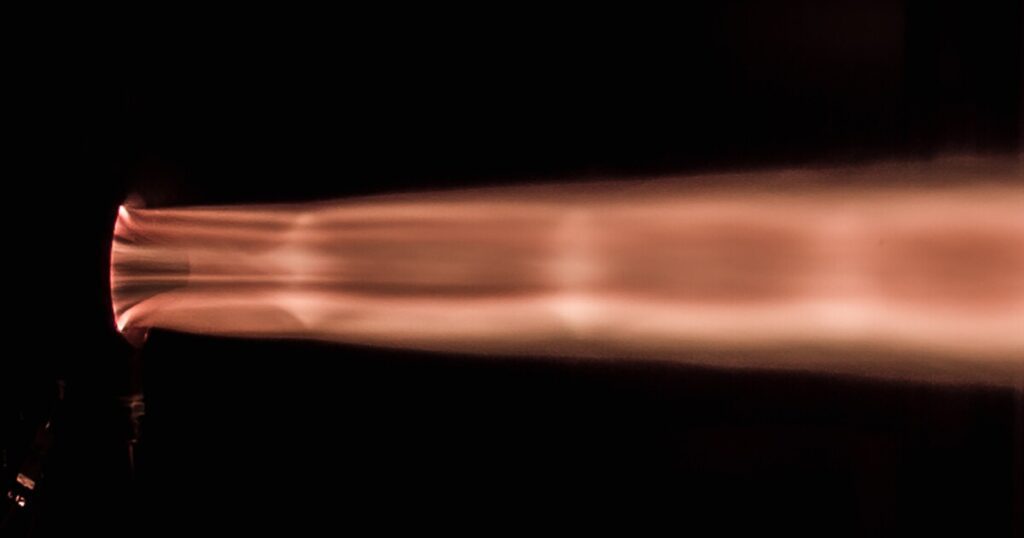Breakthrough in Aerospace: The Rise of Aerospike Engines with AI Technology
In a remarkable leap forward for aerospace engineering, a new aerospike engine that runs on oxygen and kerosene has successfully demonstrated its prowess by achieving 1,100 lb (5,000 N) of thrust during an 11-second hot fire test. This innovative engine was developed using an advanced Large Computational Engineering Model, showcasing just how much artificial intelligence (AI) has transformed this complex field.
Traditionally, designing cutting-edge aerospace engines is no small task. It involves extensive cycles of modeling, testing, and revising that can stretch across years. However, AI is stepping in, speeding up these processes, and changing the game altogether. By analyzing complex data, discerning patterns, and creating virtual prototypes, engineering AIs are reshaping the future of aerospace. But there’s a catch; if the data fed into these systems is flawed, the output will be equally unreliable—it’s the classic "garbage in, garbage out" scenario.
The Aerospike Advantage
Enter Dubai-based LEAP 71, pushing boundaries with their application of modern engineering AI to tackle the unique challenges of the aerospike rocket engine. Unlike conventional rockets, which utilize a bell-shaped nozzle that optimally functions at a specific altitude, aerospike engines offer adaptability. The spike or plug design mimics the bell’s interior to form a virtual nozzle that adjusts automatically to changing air pressures. As the rocket ascends and atmospheric conditions shift, the aerospike continuously modifies its shape to maintain efficiency.
While several aerospike engines have been developed since the 1950s—and one has even been airborne—getting them flight-ready remains a challenge. LEAP 71 is stepping up by employing its Noyron Large Computational Engineering Model, uniquely designed by aerospace experts. This AI isn’t just crunching numbers; it deeply understands physical interactions, thermal behaviors, and projected performance metrics.
The Noyron model undergoes a feedback loop, using the performance data generated to refine its designs continuously. This includes optimizing the engine geometry and manufacturing parameters, ensuring that every aspect is considered before the prototype is made.
Rapid Development through AI
In a stunning showcase of efficiency, Noyron autonomously designed this latest aerospike engine within a mere three weeks. It then went through a manufacturing process involving Selective Laser Melting—an advanced 3D printing technology—resulting in a solid block of copper. The test firing occurred on December 18th, 2024, subjecting the engine to extreme conditions with gas temperatures reaching 3,500 °C (6,300 °F).
The exciting test was part of an ambitious campaign at Airborne Engineering in Aylesbury, England, where four engines were tested over four consecutive days. “We managed to extend Noyron’s capabilities to address the unique complexities of this type of engine,” said Josefine Lissner, CEO and Co-Founder of LEAP 71. “The intricate cooling of the spike using cryogenic oxygen, coupled with the outer chamber cooling via kerosene, showed promising results with mostly untested components.”
With such success, we see the potential for this AI-powered approach to revolutionize the aerospace industry in ways we could only dream of just a few years ago.
Conclusion
The advancements we’re witnessing in aerospace engineering, particularly with the advent of AI-driven design like that of LEAP 71’s aerospike engine, illustrate the exciting future of space travel. As technology continues to evolve, we can expect to see more innovation, cutting down on the extensive development timelines that have historically challenged the industry.
The AI Buzz Hub team is excited to see where these breakthroughs take us. Want to stay in the loop on all things AI? Subscribe to our newsletter or share this article with your fellow enthusiasts.




